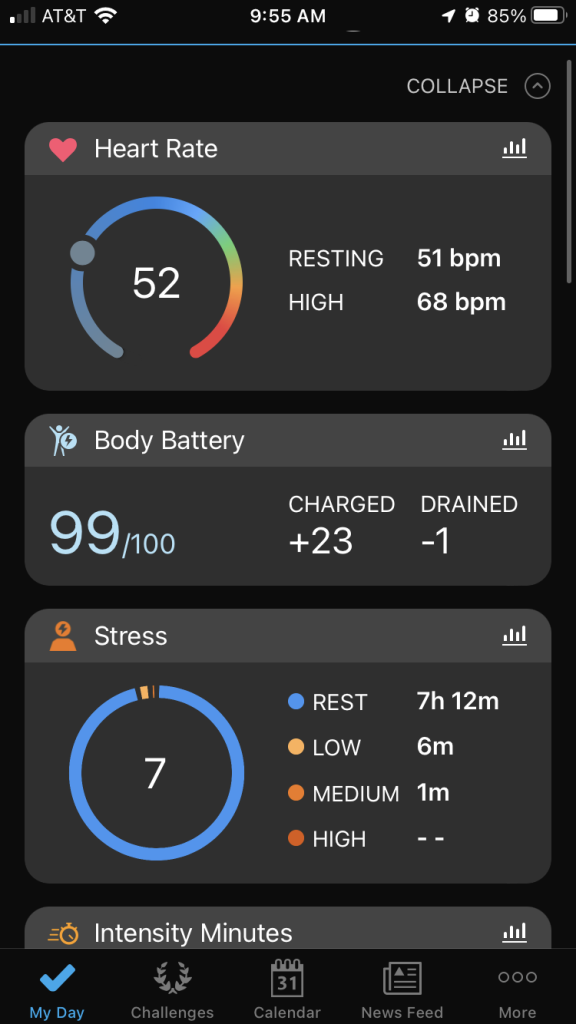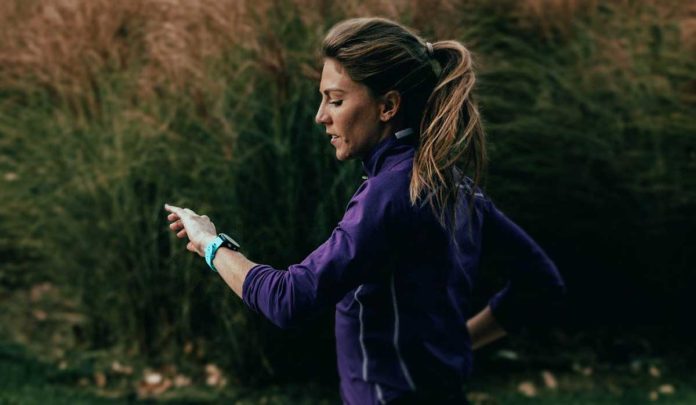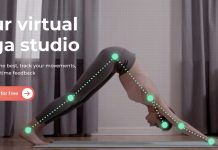If you’ve been thinking about getting a fitness wearable for this year, consider using a smartwatch from Garmin to monitor your health and track fitness metrics.
Most Garmin watches and trackers come fully loaded with awesome health features like a body battery monitor, day and night oxygen tracking, sleep tracking, and heart rate to keep you in tip-top shape.
In this article, we provide a summary of the general features you’ll have access to if using a Garmin to monitor your health, fitness activity, and overall wellness.
The awesome news is that there are a ton of different models and options when it comes to Garmin products, so head over to their site to browse which one may be your perfect match.
Contents
Suggested readings
- How to utilize Garmin’s sleep score to monitor the quality of sleep
- My Garmin isn’t syncing with Strava: steps to fix it
- Keeping your kids active: A review of Garmin’s Vívofit jr. 3
- Garmin releases the new Venu 2 Smartwatch
What features do you get if using Garmin to monitor your health?
Have you ever wondered why some mornings you feel rested and others you feel groggy? What do your heart rate and oxygen percentages mean regarding how you feel?
Ever considered tracking your hydration levels? Do you need to breathe and relax more?
These are just some of the features you can take advantage of if you use Garmin’s smartwatch to monitor your health.
Let’s explore these features below.
Body Battery 
Garmin’s coined term, Body Battery, really focuses on your body’s energy levels throughout the day. This can be a super helpful health metric that prioritizes your self-care.
Are you running on empty? Need more sleep? Looking for activity planning when you feel most energized?
Just as an increased activity for our phones leads to battery depletion, increased and sustained activity for our bodies also leads to energy depletion.
And this doesn’t just have to be physical activity. Stress – good or bad – also leads to energy usage.
Rest, sleep, and relaxation ultimately help restore our energy, just as charging your phone’s battery boosts its energy reserves.
The Body Battery number ranges from 1-100, with changes based on heart rate variability, perceived stress, activity, and quality of sleep. This can all be viewed on the My Day page on the Garmin Connect app.
The higher the number, the greater your current energy reserve, and ultimately the better you should feel to conquer a larger project or engage in a workout.

A screenshot of my current Body Battery shows a high of 99/100 on a calm Saturday morning after a restful sleep. More than likely during the week, this number would be lower after a long day at work that usually involves stress.
You can also look at the past 7 days or 4 weeks to see any trends in your energy levels. It really is a helpful tool by Garmin to monitor your health.
Look here to see which Garmin watches are compatible with showing the Body Battery.
Sleep tracking 
Garmin watches and trackers are great at tracking your sleep patterns, and one some models, you even get a more detailed sleep score.
You’ll see helpful information about your sleep, including its stages (light, deep, REM, awake), and some models track your sleeping oxygen saturation via Pulse Ox and even your sleeping respiration rate. 
All this sleep data is powered by your watch’s sensors, particularly the optical heart rate sesnor and accelerometer.
Health stats 
It’s a given that most smartwatches today can monitor your heart rate. This is a helpful stat during exercise, of course, but it may also be a stress indicator if your heart rate is elevated throughout the day.
Additionally, the pulse oxygen sensor measures your blood oxygen saturation during waking and sleeping hours. Knowing how well your body absorbs oxygen can be helpful for workout efficiency, as well as recovery time. 
Hydration tracking
Not all fitness wearables out there emphasize the importance of hydration. Using Garmin to monitor your health allows you to log daily fluid intake as a reminder to stay hydrated.
You can also adjust and set customized goals as to how much water you should be drinking a day. ![]()
If you’re a super active person, staying hydrated becomes even more important.
Menstrual cycle tracking
If you’d like to incorporate menstrual cycle tracking when using Garmin to monitor your health, this is an option with some of their fitness wearables.
Insights to this may help you track your mood, energy levels, and recovery phases, depending on that time of the month. ![]()
This isn’t a health metric we usually think of monitoring, but it’d be worth looking into if you feel that you could benefit from knowing more about this.
Preloaded vs. custom workouts
Garmin also offers a variety of built-in workouts through its Garmin Connect app. Or if you’d like to make your own, you can certainly do that too!
Once in the app, just head to the More option from your home screen, then choose Training > Workouts.
You can either select Find a Workout or Create a Workout from there.

Relax reminders
The relaxation reminder is another great feature you have access to if you’re using a smartwatch from Garmin to monitor your health and fitness. 
Sometimes we don’t even realize how stressed we are throughout the day. Or maybe you haven’t gotten up from your desk and moved in several hours.
Fortunately, your Garmin watch silently monitors for these signs that you may need a break.
If you’d like to toggle on these relax reminders, select your device from the Garmin Connect app, then Alerts > Relax Reminders.

This can also be turned off at any time, but I like getting a buzz on my wrist to help me remember to pause, stretch, and breathe for a few minutes.
Final thoughts on using Garmin to monitor your health this year
Some of these health stats are obvious (e.g., heart rate), but maybe some of the other ones aren’t as widely known or utilized as well as they could be.
If you’ve already got a Garmin watch, check into these other health metrics we mentioned if you aren’t already using them.
After all, you’ve got them – literally – at your fingertips.








